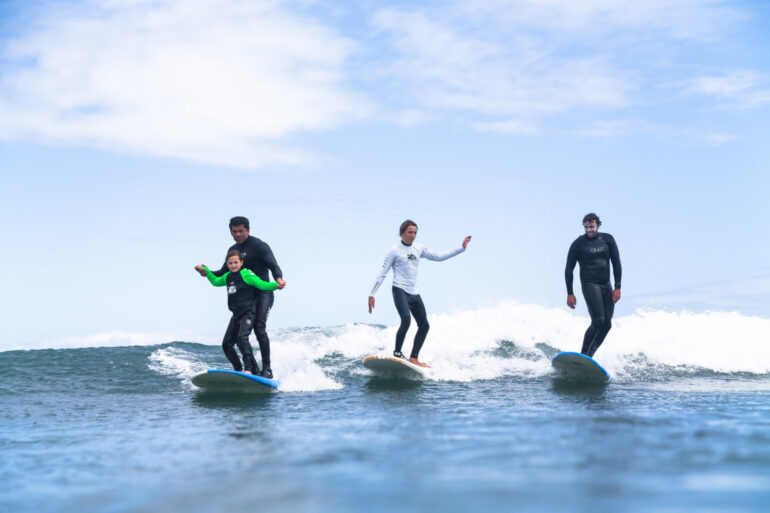This past year, it might have seemed like everyone you know started surfing. You weren’t imagining it; as the worldwide mandate to shelter in place and social distance disrupted our lives, the sport boomed. For most of us here in Marin, sheltering in place wasn’t really too stressful, since we’re blessed with so many outdoor spaces where we could keep a safe distance from others. We went outside and hit the trails, the bike paths, the bay, and maybe most of all — the beaches (when they were open). So while we were there, why not learn to surf? After all, surfing has social distancing built in, and it offers essentially the same benefits of going to the gym. It has a low entry cost, coming in at about $1,000 for all the gear (less than half that if you get used equipment); low ongoing costs; and year-round access with no fees (as in no lift tickets required), making it a no-brainer for newbies.
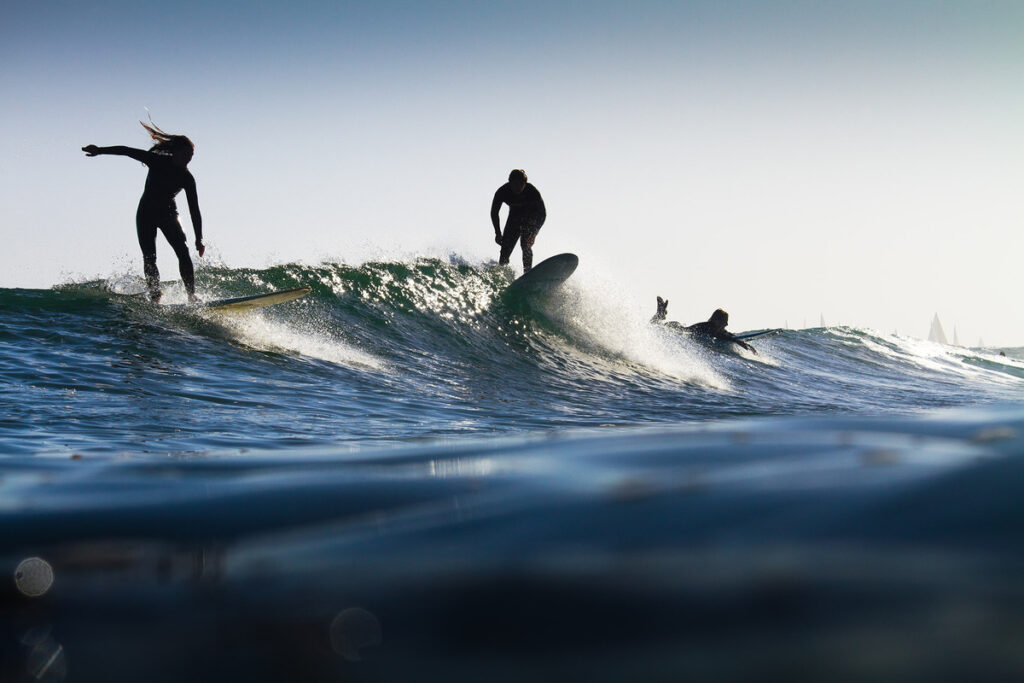
Even before the pandemic, however, the popularity of California’s celebrated state sport had been on the rise. If the fact that surfing is the official state sport is news to you, or you’re wondering what the state sport was pre-surfing (there wasn’t one), here’s the scoop: In 2018, then Governor Jerry Brown signed Assembly Bill 1782 into law. Even though it was already the state sport of Hawaii, our legislators claimed that the Golden State was the center of innovation for the surf industry. Marin played a part, too: Michael Stewart of Mill Valley-based Sustainable Surf helped draft the verbiage in the bill regarding sustainability.
Surfing in California has come a long way since three Hawaiian princes spent their summer break escaping a San Mateo boarding school to go surfing in Santa Cruz in 1885. But while Hawaiians may have ushered in the sport, it was only a matter of time before Californians were hooked.
Surfing for All
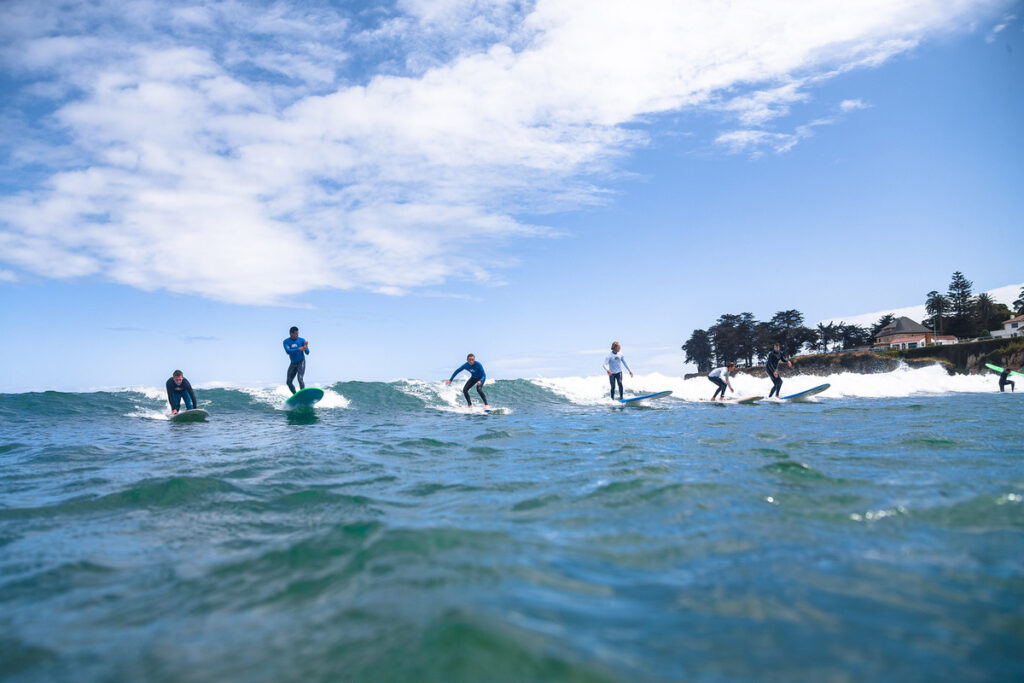
Back in 1982, Peter Towle, along with his buddy Chip Booth, had just started the Lick Wilmerding Surf Team at their high school in San Francisco. At the time, they didn’t realize they were part of a new wave (pardon the pun) of surfers lured into a sport that had been reserved for a few brave and hardy souls. But by the 1980s, surf culture was thriving, the quality of wetsuits had improved, surfboards were lighter and easier to maneuver, OP (Ocean Pacific) shorts were fashionable and Fast Times at Ridgemont High celebrated one of the dudiest dudes of all time, Sean Penn’s character, Jeff Spicoli. “We thought it would be a good idea to start a surf club so we could feel better about cutting class to go to the beach,” says Towle, who can now be spotted riding waves with his daughter, Grace, in Bolinas. “Our group consisted of Spencer Rank, Rick Addicks and a handful of new friends from some of the other schools, including Justin Gooding and Pete Berry. We didn’t compete or have anything formal, it was all about hanging out with buddies who had recently discovered the sport and were drawn to the ocean.” These friendships and love for the ocean have endured, yet when they paddle out today, not only are a few of them on stand-up paddleboards (gear change), and the lineup (of other surfers) has become more diverse in both gender and race.
Gidget’s Protege
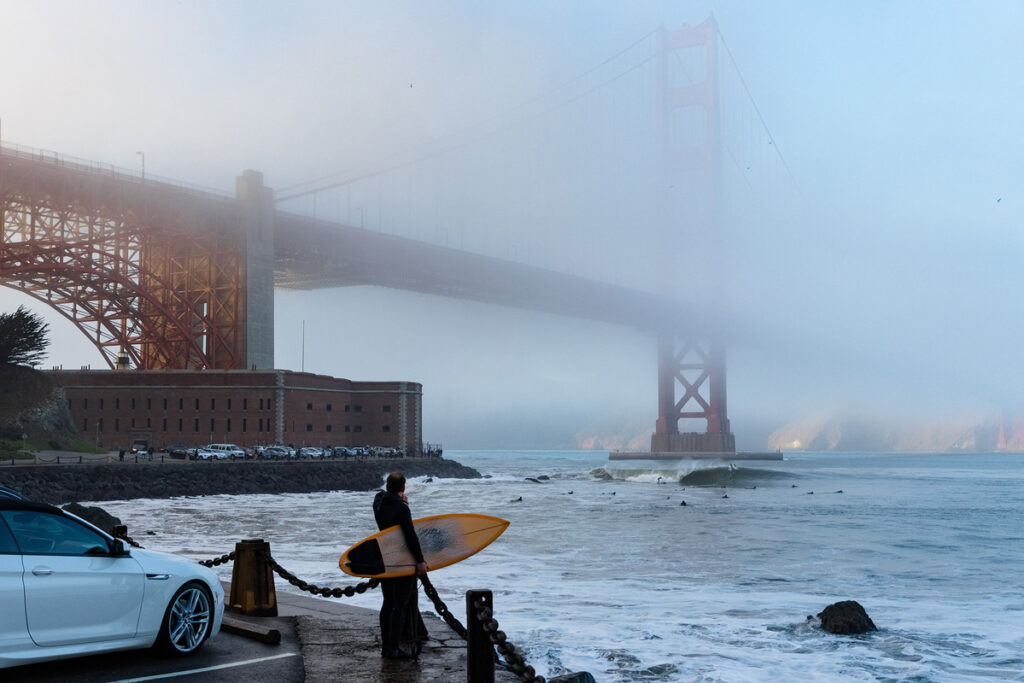
One of the biggest changes in surfing has been the greater number of women who have embraced the sport. A small but mighty minority had been making a splash in surfing for decades. When the Women’s International Surfing Association was formed back in 1975, one of the founders, Mary Setterholm, was quoted as saying, “Waves treat everyone equally; men and women are on the same terms as far as nature is concerned.”
However, it took over 20 years for contest promoters to step up and acknowledge the presence of women in the sport. A group of Bay Area women were behind the World Surf League’s (WSL) announcement in 2019 that it would offer equal prize money to both men and women, making it the first U.S.-based global sports league to apply pay parity. One of these women, Beth Jeffries, a personal trainer in Mill Valley, along with star surfer Bianca Valenti and several other female surfers, was featured in It Ain’t Pretty, the 2016 documentary about Women’s Big Wave Surfing, highlighting a handful of friends who bond together to combat sexism in the waves.
Jeffries moved to Marin from Crested Butte in the late ’90s. An extreme athlete, she didn’t consider her gender a barrier to riding waves. An avid swimmer, she figured she would be able to handle the water; she just needed a board. “I walked into Prooflab one day and met Nate, the owner, who was friendly and helpful with advice on where to learn,” Jeffries says. “I bought a surfboard, went out to Bolinas and was immediately addicted.”
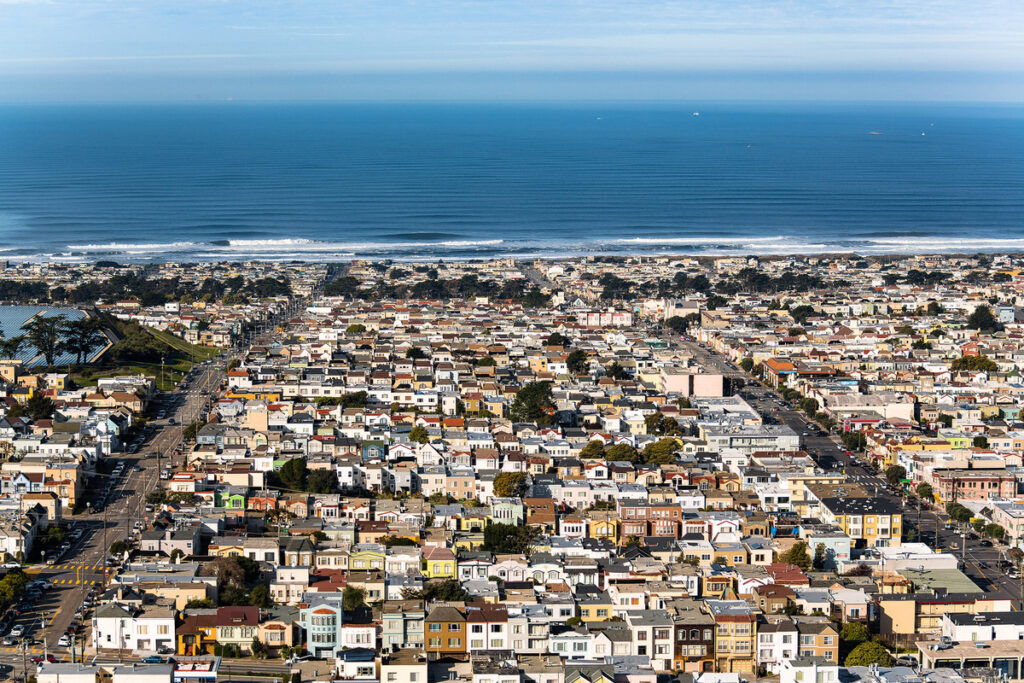
It took her longer to start surfing at San Francisco’s Ocean Beach, which was off limits for beginners for good reason. “It took years before I felt ready to go to Ocean Beach, and once I did, there was hardly anyone else surfing,” she recalls, “I would just drive down The Great Highway looking for heads bobbing in the water, and once I saw someone, I’d park and paddle out.” This is in sharp contrast to how things are these days; the pandemic surge of new surfers in the water has given her pause, and time commitments have kept her on land. “I don’t surf as much these days, but once I retire, I plan to be in the water a lot more: it’s the ideal lifetime sport,” she says.
The Mechanics
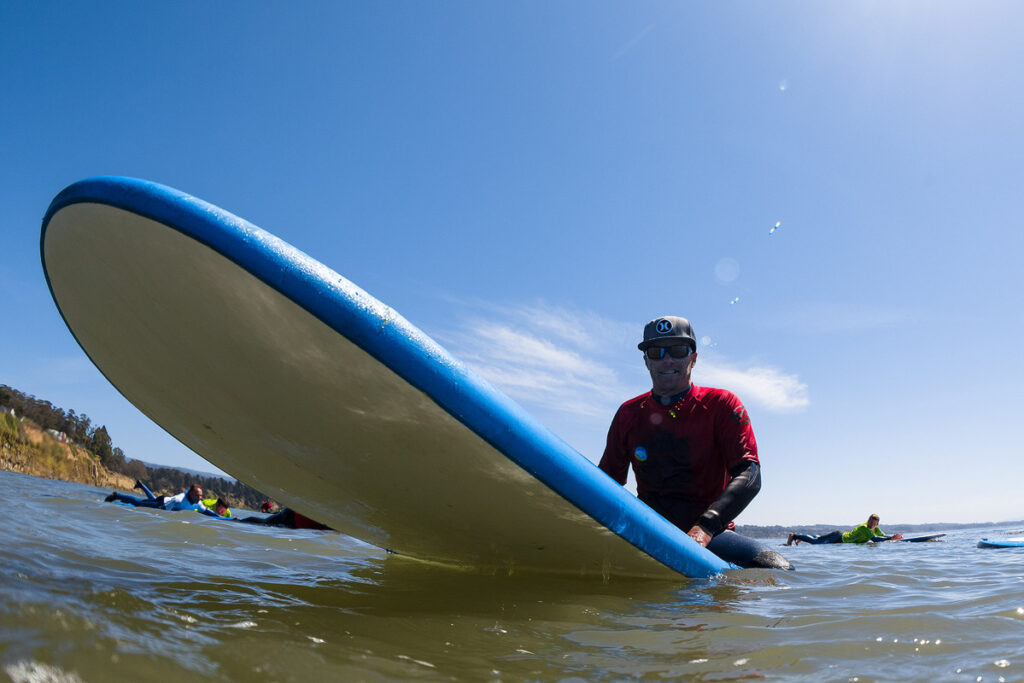
Learning to surf is relatively easy given the right conditions, which has driven a lot of interest in the sport. But while the concept is simple, it can take a lifetime to master. What drives surfers to stick with the sport is the experience of harnessing the power of Mother Nature in a symbiotic way. Using the power of the paddle stroke, a surfer looks to capture the energy of the wave and turn that energy into fun. Every wave has a unique profile; some waves are 10-second thrill rides while others offer up toboggan-like kiddy rides lasting 30–45 seconds.
Don’t be fooled, however, by what you see on the internet. A wave is a powerful force that, if disrespected, can be outright deadly. Watching pro surfers making it look easy to tear up Mavericks does not mean you should head out there anytime soon. Proper physical and mental training are the tools of the trade for any experienced surfer. Proper gear is another key element.
There are a few key forces of physics to consider in order to achieve the elusive “stoke” created from gliding down the face of a wave. For instance, the longer the board, the faster it will paddle, and the easier it will catch the wave. Try to turn one of these “logs” though, and you’ll see what drives surfers to the shorter, more nimble surfboards.
Volume or buoyancy is another variable that needs to be matched to a surfer’s size. The buoyancy of your craft will determine the ease and speed of paddling (more float, easier to glide above the water). Too much of a good thing, however, is a bad thing. Attach a large-volume surfboard to a smaller person, and you’ll watch them bob back to the beach like a human tea bag.
The Olympics
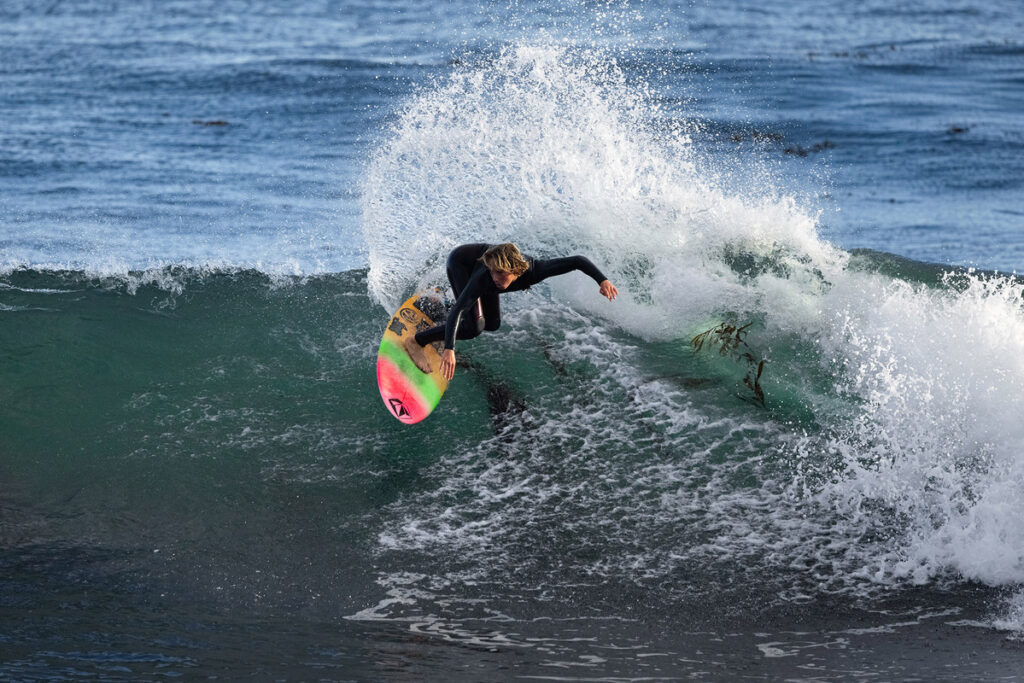
Demonstrating just how influential — and technical — this sport has become, even the Olympics are getting rad. Surfing is making its debut this month, and will be in the worldwide spotlight as 40 (20 women and 20 men) of the world’s top athletes will be competing at Shidashita Beach, or “Shida,” located about 40 miles outside of Tokyo. Bringing the sport into the Olympics was a unanimous decision. (While curling may be a great sport, it’s not going to bring the Olympics the 18–35 demographic that keeps the games current and relevant.)
The location was chosen after the International Surfing Association consulted with Surfiline’s forecast team. As reported on Surfline, Chief Meteorologist Mark Willis said: “We identified that average surf heights at Shida are in the thigh-waist-chest high range during the dates of interest (July 24–August 9).” Athletes will have a 16-day window for competition. Rumor has it that super celeb Kelly Slater is building one of his wave pools nearby, just in case Mother Nature holds back. Representing America will be Kolohe Andino (California), Carissa Moore (Hawaii), Caroline Marks (Florida) and John Florence (Hawaii).
Competition at Home
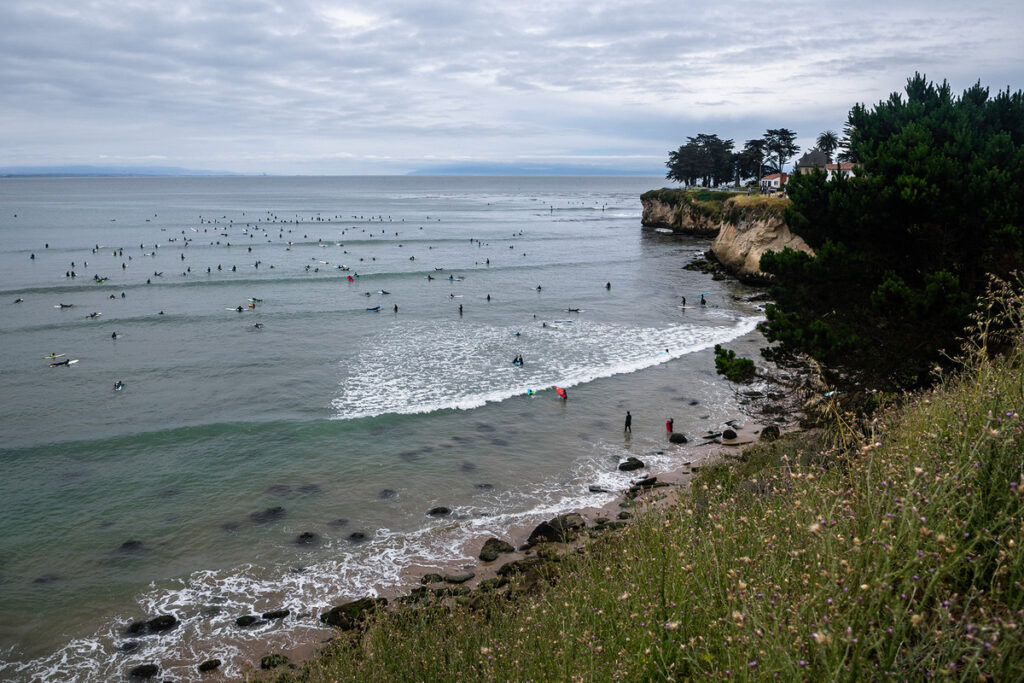
More than 30 years after the reign of the Lick Wilmerding Surf team, Northern California’s shoreline is now the setting for an evolved high school competitive surf scene, including Tamalpais High School’s team headed up by Eric Swengold, dad to Jacob, Ethan and Macabee (all competitors). The team formed organically, when his two oldest sons were surfing in the National Scholastic Surfing Association NSSA competitions in Santa Cruz. “Jacob found out there was a high school league (SCSSA) being run by famous shaper Ward Coffey and his wife, Susan, so he called them and asked if Tam could join the league if he could pull together a team,” Swengold says. “About four days before the first contest, Jacob texted me at work and asked if I knew CPR — the team needed a certified coach. I signed up with the Red Cross and got re-certified, and from then on I was the ‘coach.’ I use that term loosely, because most of the team is much better than me. Swengold, whose passion for the water started back on the East Coast with an Original Windsurfer with teak booms, considers himself more of an organizer and athlete whisperer. “We generally have about two-thirds men, one-third women on the team, with the core from Tam, including the kids from Bolinas who usually started earlier and have been an important part of the team, and we have had students from other schools that don’t have their own team round out our roster,” he explains.
Stewardship
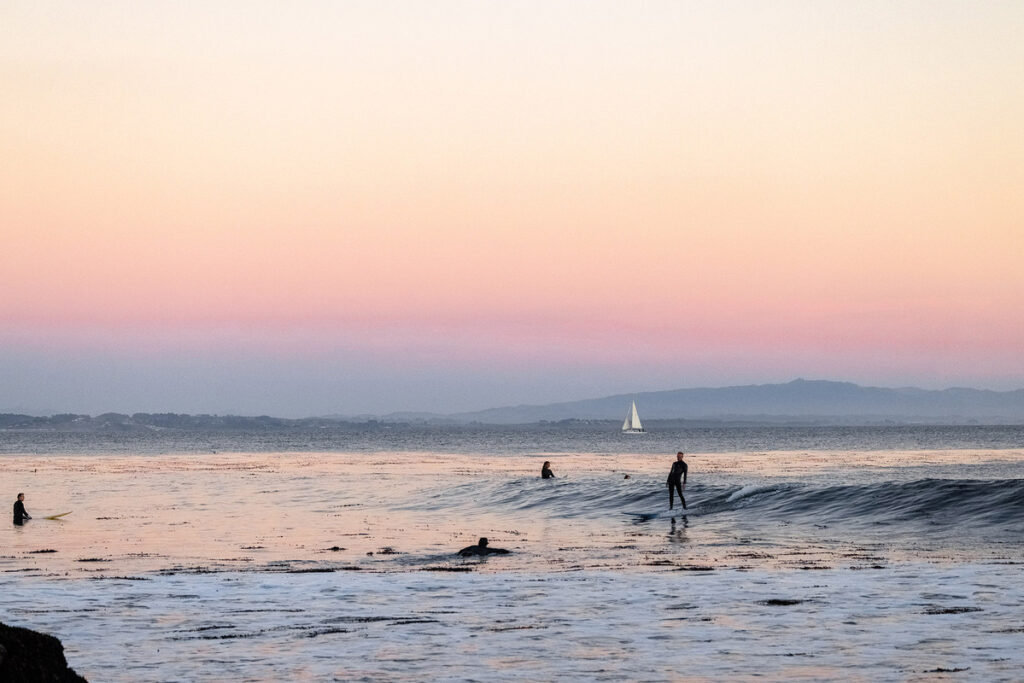
In the past decade, the sport has also shifted culturally. The aforementioned Fast Times stereotype, aka a stoner-dropout, has been replaced with a new much broader definition of “surfer.” (Addicks, one of the founding members of the Lick Wilmerding Surf Team, for example, is now a fireman, lawyer and Rotarian, giving back to the community in an immensely positive fashion.) In other words, the attitude has changed from exclusion to inclusion, stewardship for the earth and living a healthy life. Giving more than one takes is now part of surfing’s DNA.
This new identity is epitomized by groups like the Surfrider Foundation, formed in 1984 when a group of like-minded surfers from Malibu, California, bonded over the efforts to protect their favorite surf spot from escalating coastal development and pollution. Volunteers included surfers, environmentalists, and people who just love and want to care for the ocean. Today, the group boasts 80 chapters and more than 1 million supporters fighting more than 100 active campaigns around the country.
In the 135 summers since those three Hawaiian princes fatefully surfed the waves in Santa Cruz, we’ve seen surfing boom, bust and boom again, and the effect on our culture has only grown. Surf culture has spread, pardon the expression, like a virus, into a worldwide phenomenon that looks to California and Hawaii as its spiritual birthplaces.
How to help:
Consider supporting one of these local nonprofits that urgently need support during the pandemic.
More from Better:
- The Best Places to Play Golf Throughout the Bay Area
- Kids Find Hope on the Water Through Rowing — Donate to Help and Double Your Impact Now
- Champions On the Field and Off: 10 Most Inspiring Athletes
Marin native David Wells is a partner at 101 Surf Sports in San Rafael. When he’s not windsurfing, paddling, surfing or foiling on the bay he’s working hard to get others out on the water.
